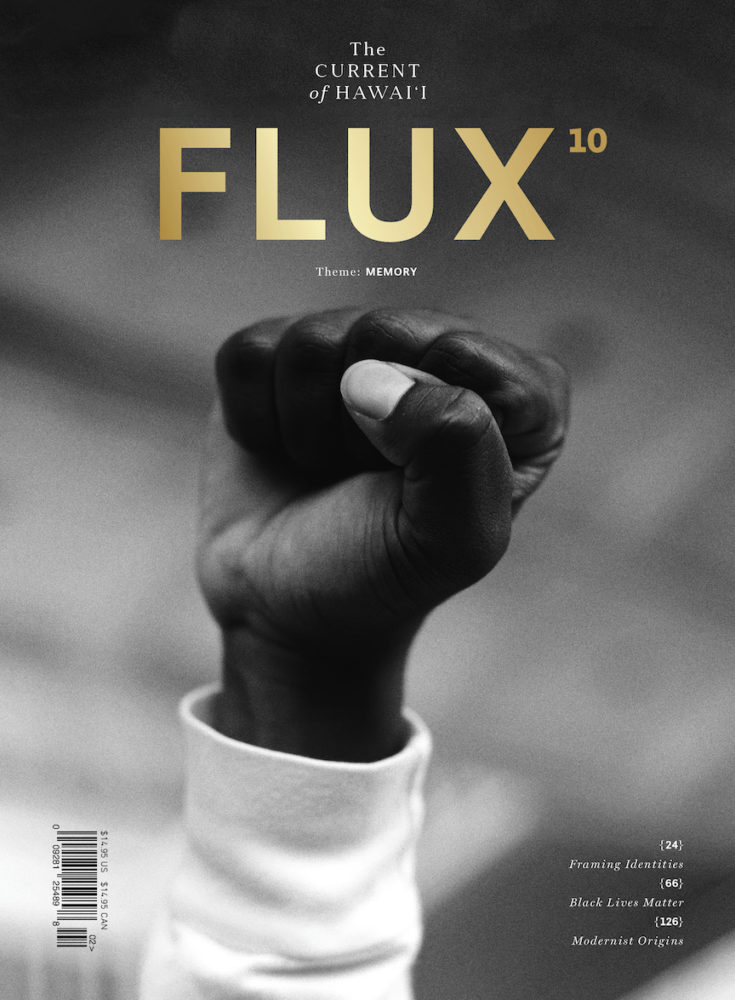
“Every generation surprises the one that preceded it. ” – Haunani-Kay Trask
Editor’s Letter:
For an unprecedented time,
as this collective one we’re living through has been so widely referred to, there is a stilling comfort in knowing perhaps there is already an ‘ōlelo no‘eau that suits it. Here, a popular and applicable one: “I ka wā mamua, ka wā mahope.”
Translation: “In the past, the future,” more commonly understood to mean, “The future is in the past.” Somewhat of a proverbial ouroboros in both speech and translation, its rotund construction was clarified best by Hawaiian scholar Lilikalā Kame‘eleihiwa when she wrote, “In Hawaiian, the past is referred to as ka wā mamua, or ʻthe time in front or before.’ Whereas the future, when thought of at all, is ka wā mahope, or ʻthe time which comes after or behind.’ It is as if the Hawaiian stands firmly in the present, with his back to the future, and his eyes fixed upon the past, seeking historical answers for present-day dilemmas. Such an orientation is to the Hawaiian an eminently practical one, for the future is always unknown, whereas the past is rich in glory and knowledge.”
This retrofitted reasoning to resituate your relative position as you navigate this year is not a panacea for the dueling diseases—Covid-19 and racism—that are ravaging lives across the country, but, if anything, it’s a salve. In the climate of anxiety and uncertainty that beclouds this moment, gathering your bearings is a viable way to keep from keeling over. The systemic inequities that the pandemic has exposed in these swift if glacial six months since the first known cases of the virus emerged in the United States and Hawai‘i have upended our days with pressing questions, one being: How did we get here? Improving on how to answer that question is key to combating being negligent to the present, because “if you understand your condition,” another Hawaiian scholar, Haunani-Kay Trask, once suggested, “you’re in a better position to interact with it, to change it, to increase your participation in it.”
This issue of Flux is inspired by the subject of memory, that slippery and vulnerable device. The stories within concern themselves with this gesture of looking back to look forward, whether in art, design, travel, or allyship. At their most intimate, like in our feature from four local writers, “The Pandemic Diaries,” on page 78, they create a record for posterity of the challenges we are facing at this date; at their most impassioned, like artist-activist Joy Lehuanani Enomoto’s essay, “Black Lives Matter in the Hawaiian Kingdom,” on page 66, they are attempts to organize through a foggy and imposed collective memory of Hawai‘i—itself a byproduct of the state’s own colonial baggage—to strike greater degrees of clarity: historical, political, and moral. At their best, the stories display how memory can transmogrify an abstract, solitary account into a wieldy weapon. Miming memory can equip us with the consciousness we’ll need when we can once again step outside without a care over this virus, but with all the cares in the world for everything else plaguing us, whenever that will be.
With aloha,
Matthew Dekneef
Editorial Director
